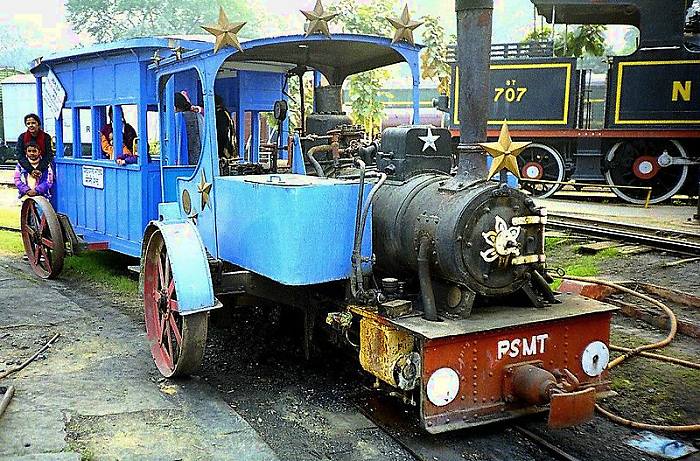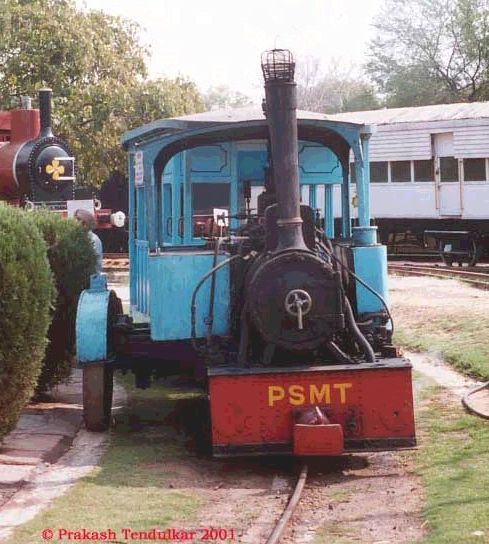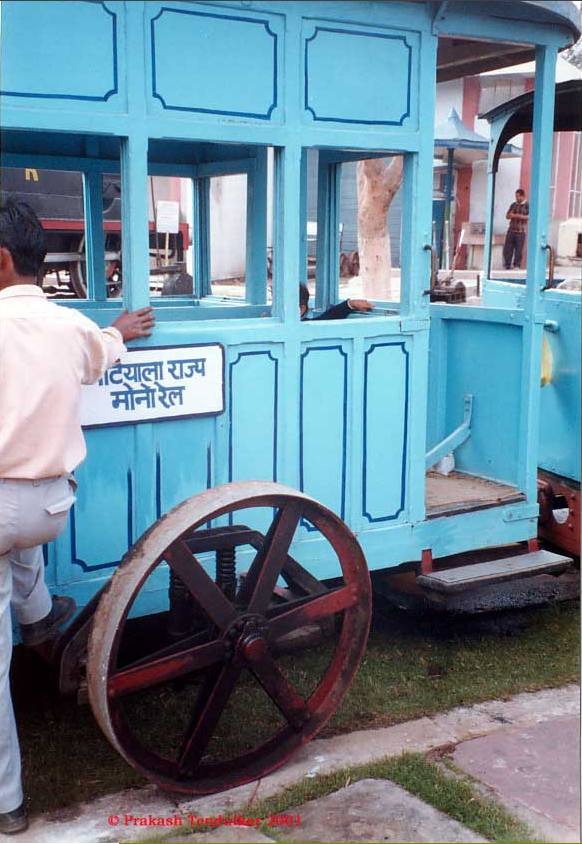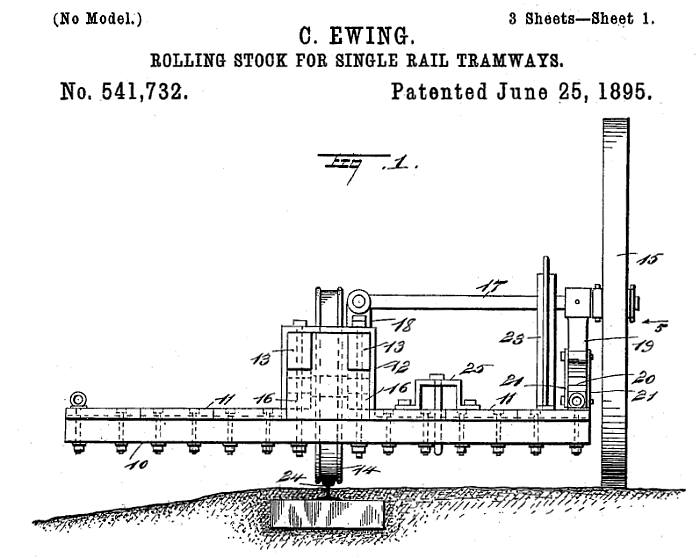The Patiala State Monorail Tramway was the only known application of the Ewing Monorail Tramway system, which was orginally proposed as far back as 1868 by William Thorold.
The main aim of the system was the cheapest monorail possible; it was also good at negotiating tight curves. With one rail, there has to be some way of stopping the locomotive and train from falling over sideways. The Lartigue Monorail straddled its single rail, so that rail had to be elevated above ground level, adding cost and making level crossings a rather surreal business. The Brennan Gyro-Monorail had a single rail laid at ground level, but required a complex system of double gyroscopes to keep it upright.
The Ewing System solved the problem by being not quite a monorail- most of the load went on the single ground-level rail, using double-flanged wheels, but some 4 or 5% of the weight was carried on a road wheel that stopped it tipping over. The small amount of load on the road presumably did not detract much from the low rolling resistance of the steel wheel-steel rail interface.
The road wheel would take exactly the same path each time, and on the unsurfaced roads of the day this must have tended to wear a groove; quite possibly the PSTM had a tendency to lean towards its road wheel, but at least this would have been in the direction of increased stability. The system would also work if the rail was built alongside an existing tarmac road, on which the single road wheel would take up little space.
 |
| Left: The preserved Patiala monorail locomotive
It is in full steaming and working order at the Indian National Railway Museum in Delhi.
The PSMT was begun in 1907 but closed in 1927 due to rising competion from road transport. One engine was restored by the Northern Railway Workshops at Amritsar, and is in operation at the National Railway Museum of India. PSMT stands for Patiala State Monorail Trainways
One of the outside cylinders can be seen, painted yellow.
|
 |
| Left: The preserved Patiala monorail locomotive
Shown here without the gold stars and the decoration on the smokebox door. Note the strip of concrete laid under the path of the road wheel.
The locomotives and rolling stock were built by Orenstein & Koppel in Berlin; why British constructors were not used is unknown. The Hunslet Engine Company had demonstrated that they were not afraid of building unconventional monorails.
Four locomotives were built in 1907 at cost of £500 to £600 each. They were an 0-3-0 adaptation of a standard O&K 0-6-0 design, with double-flanged wheels in the centre of each axle. The right-hand water tank was enlarged to shift some of the weight onto the 39-inch (990 mm) diameter road wheel. There were two outside cylinders of 5½in bore × 14in stroke. The fire door was placed on the right side of the fire box rather than at the back.
The middle rail wheel was flangeless to allow tight curves to be taken. This wheel was 50 cm (1 ft 8 in) in diameter. The other two double-flanged wheels were had groove depth of 2.15 centimetres (0.85 in). The locomotive wheelbase was 119 centimetres (3 ft 11 in).
|
Picture by kind permission of Prakash Tendulkar. More of his pictures of this monorail can be seen at: http://www.trainweb.org/railworld/Trip%202001/PSMT/
 |
| Left: The road wheel of the coach behind the Patiala locomotive
Note the two coils springs for suspension.
|

|
Above: Diagram from US Patent No 541732
This shows a central double-flanged rail wheel 14 and the road wheel located on a radius arm 17. Suspension of the road wheel was by the leaf springs shown at 19.
W J Ewing lived in India, at Barrackpoor in Bengal. He took out United States Patent No 541732 ("ROLLING-STOCK FOR SINGLE-RAIL TRAMWAYS") in 1895, though his name is there shown as Charles Ewing, as in the diagram. He later received another US Patent (No 742978) for a steering-bogie to convert traction engines to run on his monorail system ("STEERING DEVICE") in 1903, at which time he was residing in Madras.
|












